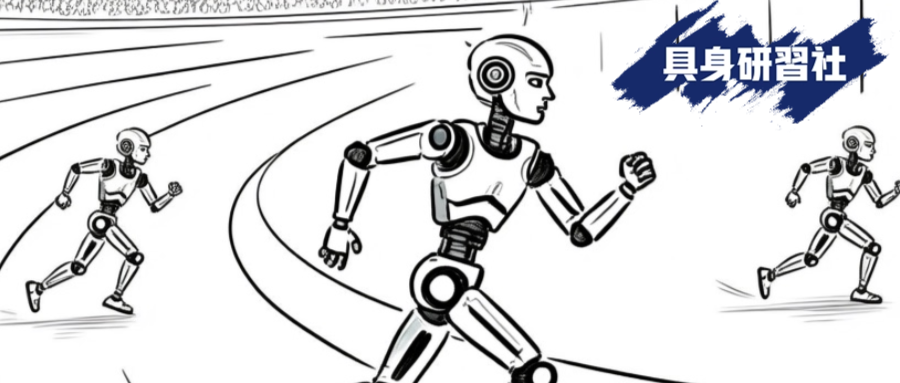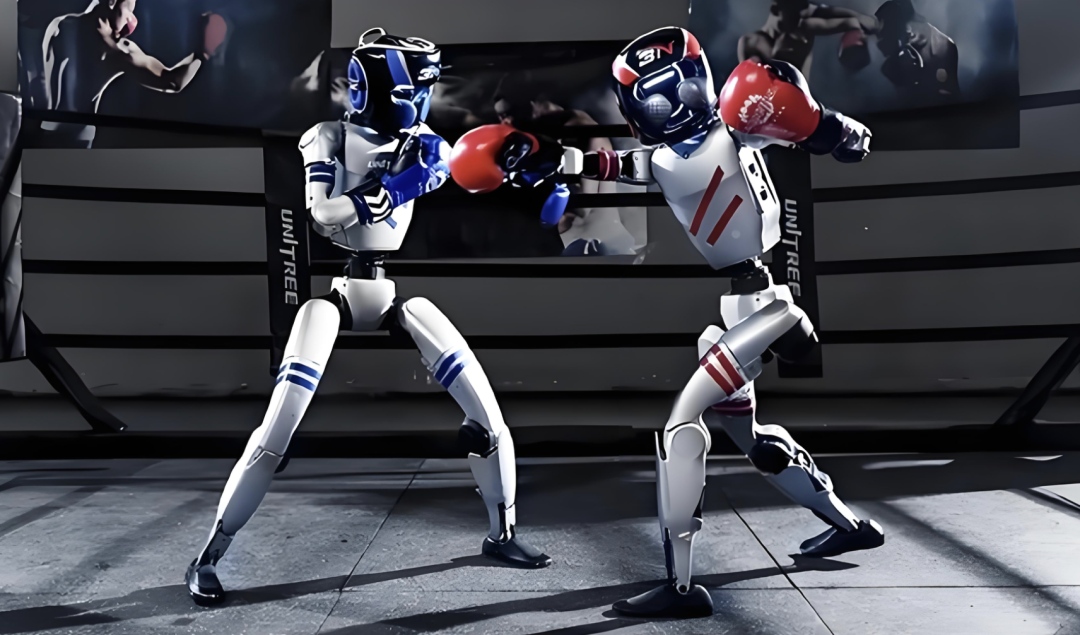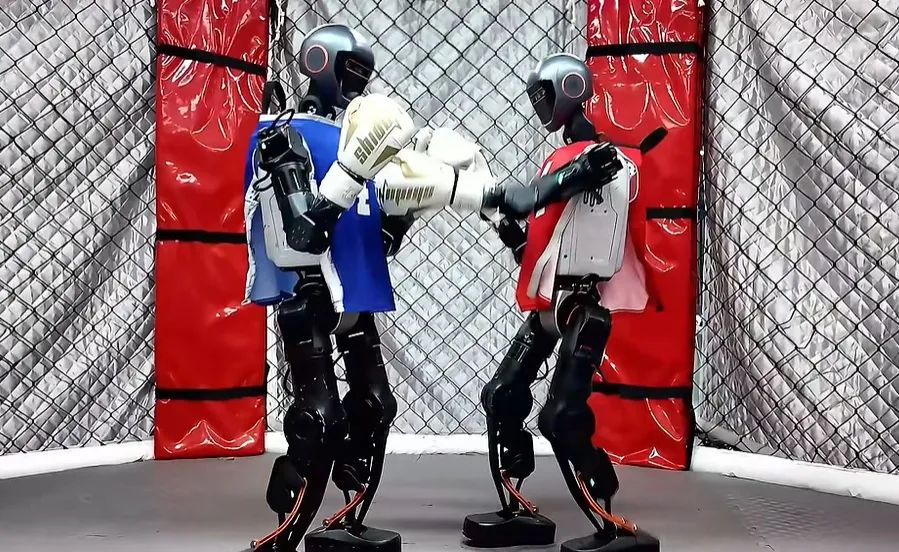The Visionary Behind Humanoid Robot Racing: A Genius in Disguise?
![]() 06/06 2025
06/06 2025
![]() 616
616

Competitions serve not merely as an "indulgent spectacle" for insiders but as a pivotal breakthrough to foster market awareness. When humanoid robots exhibit seamless fighting maneuvers in boxing matches or accomplish intricate collaborative tasks in sports meets, the visual impact is profoundly more engaging than technical whitepapers.
Editor: Di Xintong
The next frontier for humanoid robots to venture beyond the laboratory is not an application field but the racecourse. The starting gun at the Yizhuang Marathon heralded not just the commencement of a half-marathon for humanoid robots but the dawn of their entire "race era".
From a dozen robots vying together in a marathon to humanoid robot sports meets and culminating in the "bone-crunching" boxing matches orchestrated by Unitree Robotics, regardless of how the robots on stage "shed blood and sweat," they cannot evade the existential question:
"So, what's the purpose?"
Admittedly, humanoid robot competitions might seem somewhat "eccentric," as if billions of R&D funds culminate in mere town gossip, their value lingering solely in word-of-mouth. Yet, this is precisely where the ingenuity lies: a straightforward competition garners immense attention, and under the short-term exposure of massive traffic, it conducts rigorous tests on the future technological trajectory of humanoid robots, enabling the outside world to swiftly grasp their current skill levels.
By utilizing competitions as a window, the industry reaps returns in terms of exposure, commercialization, and technological iteration, navigating through the closed loop essential for the development of emerging industries.
At the enterprise level, the essence of competitions lies in the efficient conversion of the "attention economy" into commercial value. For startups, a competition's highlight moment can lead to tens of millions in funding and cooperation invitations from leading enterprises, far more contagious than traditional technology roadshows. The surge in news about Songyan Power's order influx and valuation post-marathon participation stands as a testament to this.
Thus, the individual who first proposed humanoid robots to compete in races must indeed possess genius-like insight.
By employing competitive rules to propel technological advancements and leveraging market attention to nurture industrial growth, the racecourse is not the terminus of technology but the starting line for application. The robots that have persevered on the racecourse will eventually infiltrate factories, workshops, hospital wards, and countless households, armed with the "eighteen martial arts" skills they have honed.
Why not compete?
From a competitive standpoint, current humanoid robot competitions can be categorized into two primary directions: events epitomized by marathons and boxing matches, which predominantly showcase the motion control capabilities of humanoid robots, with a heavier emphasis on physical structural design; and events represented by the Wuxi Humanoid Robot Sports Meet and the 2025 International Humanoid Robot Skills Competition, which lean more towards operational prowess, testing the coordination between the brain and body.

Image source: Unitree Robotics
A simple competition can rally numerous physical enterprises to compete horizontally in a unified environment, and the value derived from this "shared stage competition" transcends the superficial.
Taking the marathon as an illustration, achieving precise movement on complex terrain akin to walking on flat ground tests the real-time analysis and decision-making capabilities of the "brain" perception system and the motion control capabilities of the "cerebellum." The 21-kilometer route also imposes stringent demands on body stability, durability, and battery endurance, making it a comprehensive stress test for humanoid robots.
The 2025 International Humanoid Robot Skills Competition further transforms the competition into a window offering a glimpse into the "productivity era" of humanoid robots. Specifically, in industrial scenarios, participating teams must complete high-precision tasks such as car labeling and bin handling; in household settings, they perform services like desk tidying and clothes folding; and in dynamic all-terrain environments, they compete in abilities like ascending and descending slopes and traversing sandy terrains.
Here emerges the first-tier significance of competitions: through multi-dimensional contests, comprehensively verify the practical application level of key humanoid robot technologies, including high load capacity, complex terrain adaptation, dual-arm collaboration, and algorithm generalization.
These competition levels, grounded in real-world application scenarios, transform the core technical indicators of humanoid robots into observable, comparable, and iterable engineering practice standards.
Stepping beyond the competition itself to delve into its second-tier significance, from the impact it leaves behind. For enterprises, competitions are an exemplary test of technology. On the marathon course, issues like robot endurance and terrain adaptability are infinitely magnified, whereas in operational competitions, the efficiency and accuracy of the robot in executing intricate tasks directly expose the shortcomings of the algorithm architecture, prompting enterprises to augment investment in AI decision-making system R&D.
As Zhao Mingguo, a professor at Tsinghua University's Department of Automation and director of the Robot Control Laboratory, once stated, competitions can clarify technological directions. "Hosting competitions is about fostering technological accumulation, akin to DARPA in foreign countries, which aims to discover or solve a particular type of problem." The DRC competition hosted by DARPA aims to propel the application of robot technology in disaster response. "This competition was set against the backdrop of solving the Fukushima nuclear leak crisis, ultimately culminating in humanoid robots executing disaster scene tasks."
From an industrial perspective, competitions serve as a potent magnet for integrating upstream and downstream resources. An international-level humanoid robot competition often attracts the participation of various links in the industrial chain, such as component suppliers, software developers, and system integrators. The demand gaps identified by physical enterprises during competitions are swiftly transmitted to the supply chain, driving technological iterations like enhancing sensor accuracy and lightweight drive motor modifications.
Competitions are not merely an "indulgent spectacle" for insiders but a pivotal breakthrough to foster market awareness. When humanoid robots exhibit seamless fighting maneuvers in boxing matches or accomplish intricate collaborative tasks in sports meets, the intuitive visual impact is profoundly more engaging than technical whitepapers.
On social media, the viewership of thrilling clips from humanoid robot competitions often surpasses 100 million, providing the general public with a tangible understanding of the functionalities and potential of humanoid robots, laying a market foundation for their future commercialization. Simultaneously, governments and capital providers can swiftly identify enterprises with technological advantages and market potential through competitions, making precise industrial investment layouts, and accelerating the scaled development of the industry.
In this seemingly endless "race era" for humanoid robots, every competition presents an opportunity for technological breakthroughs, and every comparison serves as a springboard for industrial upgrading.
Of course, we should "compete" not merely as a self-demonstration for enterprises but also as a potent engine to propel the entire industry from the laboratory to vast application scenarios.
Competitions: Inspiration Incubators
If we narrow our focus to the racecourse itself, this small space harbors much to contemplate.
Taking the "ever-evolving" racecourse as an example, it often broadcasts football matches on official and third-party platforms, attracting numerous viewers each time, significantly enhancing the brand's distinctiveness. When viewers spontaneously share or disseminate due to novelty and fun, this highly entertaining competitive scene replicates the commercial secrets of traditional sports events.
Its business logic is not fundamentally different from mature sports IPs like the NBA and the Premier League: by constructing a competition system, attract user attention with competitive suspense, and then leverage traffic as a fulcrum to attract advertising placements or cross-industry collaborations, unlocking commercial value. This ability to convert technology demonstrations into traffic connections is precisely the core barrier to the commercial potential of the racecourse.
Zhao Mingguo once remarked, "Technology challenges can serve as a scenario even before real-world scenarios emerge, and there is even an economic scenario at play."
Accelerated Evolution has already provided a substantial case in point. Not long ago, it jointly developed the fighting game UFB with FROD Game Company, allowing players to control humanoid robots to battle in the ring via the internet. Reportedly, the game supports remote control via joysticks or Nintendo Switch's Joy-Con controllers.

Image source: Accelerated Evolution
This user-participatory value creation positions competitions as the central node connecting technology research and development, product iteration, and market education. Just as the FIFA World Cup has spawned a symbiotic relationship between sports brands and sports media, humanoid robot competitions are nurturing their own "technology-business-entertainment" ecosystem.
If we dare to envision further, this model has the potential to cultivate a business closed loop akin to the "esports ecosystem." It can not only foster professional teams and competition IPs but also establish a comprehensive industrial upstream and downstream through long-term exploration.
It is evident that the small space of the racecourse has long surpassed the confines of physical space. It is not merely a "stress test field" for technology application but also an "inspiration incubator" for commercial innovation.
When a robot executes a flawless defensive counterattack in the ring, it reflects not only a technological breakthrough but also the profound insight of the entire industry on "how to make hard technology accessible to the masses." This insight illuminates the feasible path from technology to market for all humanoid robot enterprises, making the racecourse the "golden gateway" to unlock the industry's future.







